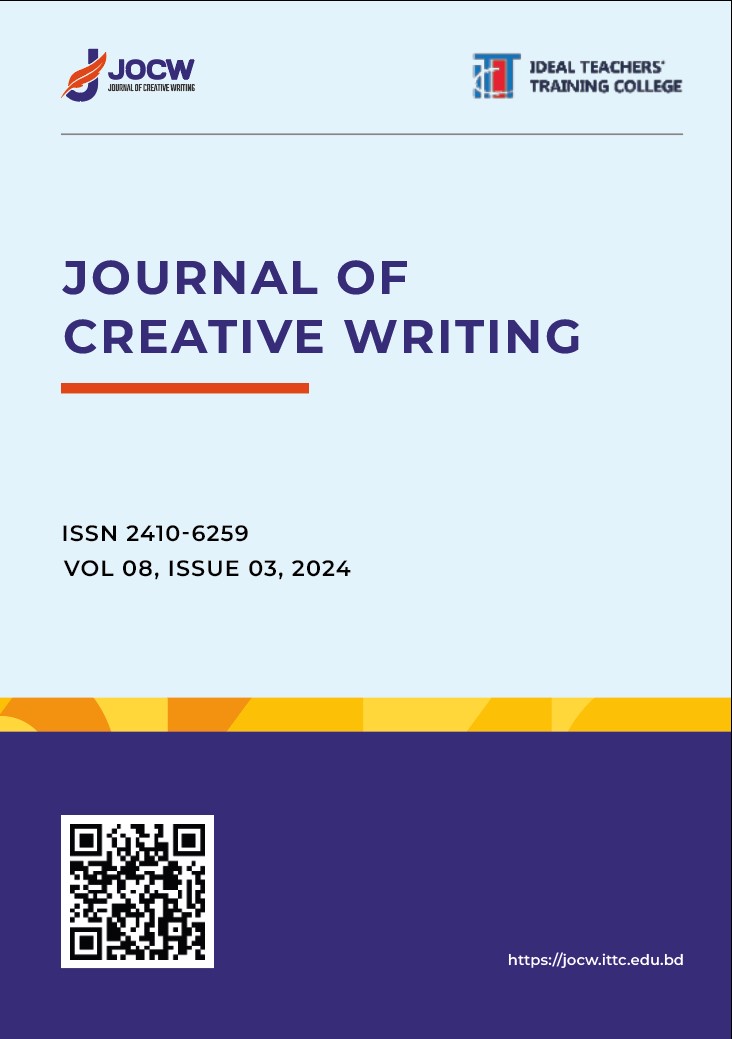Keywords
Transformational Leadership
Cultural Diversity
Bottom of the Pyramid (BoP)
Economic Empowerment
How to Cite
Abstract
The goal of the present study is to probe into the essential role of transformational leadership and diversity in culture for the successful implementation of business models aiming at the Bottom of the Pyramid (BoP).Inclusive businesses seek to alleviate poverty. This is done by integrating people from BOP backgrounds as consumers, suppliers, or distributors of companies producing goods; it cares for economic empowerment and social fairness. This research uses transformational leadership theory and cultural dimensions theory for its analysis. Leadership practices are measured, as well the impact of cultural sensitivity on ways in which people access goods and services, their level of employment or income. The results show that transformational leaderships significantly improve results: for example, transformational leadership's dimensions such as inclusiveness, innovation and transformation (enterprise). The study offers guidance to entrepreneurs and policymakers. It emphasizes the need for sustainable, scalable strategies in order to demonstrate that the economic and social impact of Inclusive business initiatives can be maximized to pay off.
References
Avolio, B. J., & Bass, B. M. (1995). The full range of leadership development: Manual for the Multifactor Leadership Questionnaire. Mind Garden.
Avolio, B. J., Walumbwa, F. O., & Weber, T. J. (2009). Leadership: Current theories, research, and future directions. Annual Review of Psychology, 60, 421–449.
Bass, B. M. (1985). Leadership and performance beyond expectations. Free Press.
Bass, B. M., & Riggio, R. E. (2006). Transformational leadership. Psychology Press.
BRAC. (2019). Annual Report. BRAC.
Bryman, A. (2016). Social research methods (5th ed.). Oxford University Press.
Fairtrade International. (2022). Annual Report 2022: The Impact of Fairtrade. Fairtrade.org.
Fridell, G. (2014). Coffee and justice: Fair trade and development. University of Toronto Press.
George, G., McGahan, A. M., & Prabhu, J. C. (2012). Innovation for inclusive growth: Towards a theoretical framework and research agenda. Journal of Management Studies, 49(4), 661–683.
Hammond, A. L., Kramer, W. J., Katz, R. S., Tran, J. T., & Walker, C. (2007). The next 4 billion: Market size and business strategy at the base of the pyramid. World Resources Institute.
Hasan, R., Ahmed, M., & Rahman, S. (2022). The role of micro-entrepreneurship in alleviating rural poverty in Bangladesh. Development Studies Review, 18(1), 102–118.
Hofstede, G. (1980). Culture's consequences: International differences in work-related values. Sage Publications.
Hossain, T. (2021). Women empowerment through micro-entrepreneurship: The case of JITA Bangladesh. Social Business Journal, 7(2), 145–158.
Karnani, A. (2007). The mirage of marketing to the bottom of the pyramid: How the private sector can help alleviate poverty. California Management Review, 49(4), 90–111.
Karnani, A. (2017). The case against the base of the pyramid. California Management Review, 50(4), 65–76.
London, T., & Anupindi, R. (2012). Using the base-of-the-pyramid perspective to catalyze interdependence-based collaborations. Proceedings of the National Academy of Sciences, 109(31), 12338–12343.
London, T., & Hart, S. L. (2004). Reinventing strategies for emerging markets: Beyond the transnational model. Journal of International Business Studies, 35(5), 350–370.
Morduch, J. (1999). The microfinance promise. Journal of Economic Literature, 37(4), 1569–1614.
Nicholls, A., & Opal, C. (2005). Fair trade: Market-driven ethical consumption. SAGE Publications.
Novartis. (2020). Novartis Social Business Annual Report. Novartis.
Prahalad, C. K. (2004). The fortune at the bottom of the pyramid: Eradicating poverty through profits. Wharton School Publishing.
Prahalad, C. K., & Hart, S. L. (2002). The fortune at the bottom of the pyramid. Strategy+Business, 26(1), 54–67.
Raynolds, L. T. (2009). Mainstreaming fair trade coffee: From partnership to traceability. World Development, 37(6), 1083–1093.
Raynolds, L. T., Murray, D., & Wilkinson, J. (2007). Fair trade: The challenges of transforming globalization. Routledge.
Singer, E., & Ye, C. (2013). The use and effects of incentives in surveys. The ANNALS of the American Academy of Political and Social Science, 645(1), 112–141.
Smith, S. (2010). Fair trade and the global market: Can the movement succeed? Journal of Business Ethics, 92(2), 401–413.
Solar Sister. (2021). Solar Sister Annual Impact Report. Solar Sister.
United Nations. (2015). Transforming our world: The 2030 Agenda for Sustainable Development. United Nations.
United Nations Development Programme (UNDP). (2010). The MDGs: Everyone’s business. United Nations.
Visser, W. (2019). Inclusive business: A critical perspective. Business & Society, 58(2), 149–170.
Yunus, M. (2003). Banker to the poor: Micro-lending and the battle against world poverty. PublicAffairs.

This work is licensed under a Creative Commons Attribution 4.0 International License.
Copyright (c) 2024 Sathi Akter, Md Ramjan Ali, Md. Mokit-Ul Hafiz, S M Al Imran
Downloads
Similar Articles
- Dr. Ambar A Qaiyum, Swetha Rao, The Study of Transformational Leadership Emergence in a Faith-based School , Journal Of Creative Writing (ISSN-2410-6259): Vol. 1 No. 2 (2015): JOURNAL OF CREATIVE WRITING
- Liza Sharmin, Instructional Design Principals for Business English Language Teaching at Tertiary Level , Journal Of Creative Writing (ISSN-2410-6259): Vol. 2 No. 2 (2016): Journal Of Creative Writing
- Tamanna Rahman Jemi, Foysal Habib, Md. Rashed Alam, Strategies for Integrating Marginalized Communities into Supply Chains: Empowering Suppliers, Producers, and Distributors , Journal Of Creative Writing (ISSN-2410-6259): Vol. 8 No. 1 (2024): Volume 8 Issue 1
- Md. Zahidul Islam, Nishat Tasnim, Md. Sobur Hossain, Shammi Akter, Md. Mehedi Hasan, Jabun Nahar, Mst. Sumaia Akter, Women's Empowerment Through Microcredit in Rural Bangladesh: Evidence From Lakshmipur District , Journal Of Creative Writing (ISSN-2410-6259): Vol. 8 No. 2 (2024)
- IBRAHIM ABU BAKER, Beyond Colonization: Reimagining English And Indigenous Voices In Africa’s Linguistic Landscape , Journal Of Creative Writing (ISSN-2410-6259): Vol. 7 No. 1 (2023): Volume 7 Issue 1
- Md. Arif Billah, Ala Uddin, Higher Education in a Globalized World: The Case for Internationalizing Undergraduate Political Science Programs , Journal Of Creative Writing (ISSN-2410-6259): Vol. 9 No. 1 (2025)
- Abass Ayodele Lasisi, Demand of Value-Based Education and Curriculum Integration in Multi-Racial and Multi-Cultural Society: Issues of Equity and Diversity , Journal Of Creative Writing (ISSN-2410-6259): Vol. 1 No. 1 (2015): JOURNAL OF CREATIVE WRITING
- Foyasal Khan, Foundation of Islamic Economics , Journal Of Creative Writing (ISSN-2410-6259): Vol. 1 No. 3 (2015): Journal Of Creative Writing
- Abass Ayodele Lasisi, Hairuddin Mohd Ali, Mediating Roles of Leaders toward Sustainability Trends of Higher Education Institutions , Journal Of Creative Writing (ISSN-2410-6259): Vol. 1 No. 2 (2015): JOURNAL OF CREATIVE WRITING
- Syed Mahsud Ali, EoT (Excellence of Things™): Digital Transformation Model for Business Excellence , Journal Of Creative Writing (ISSN-2410-6259): Vol. 6 No. 1 (2022): Journal Of Creative Writing
You may also start an advanced similarity search for this article.

 https://doi.org/10.70771/jocw.134
https://doi.org/10.70771/jocw.134







 Create or Connect your ORCID iD
Create or Connect your ORCID iD